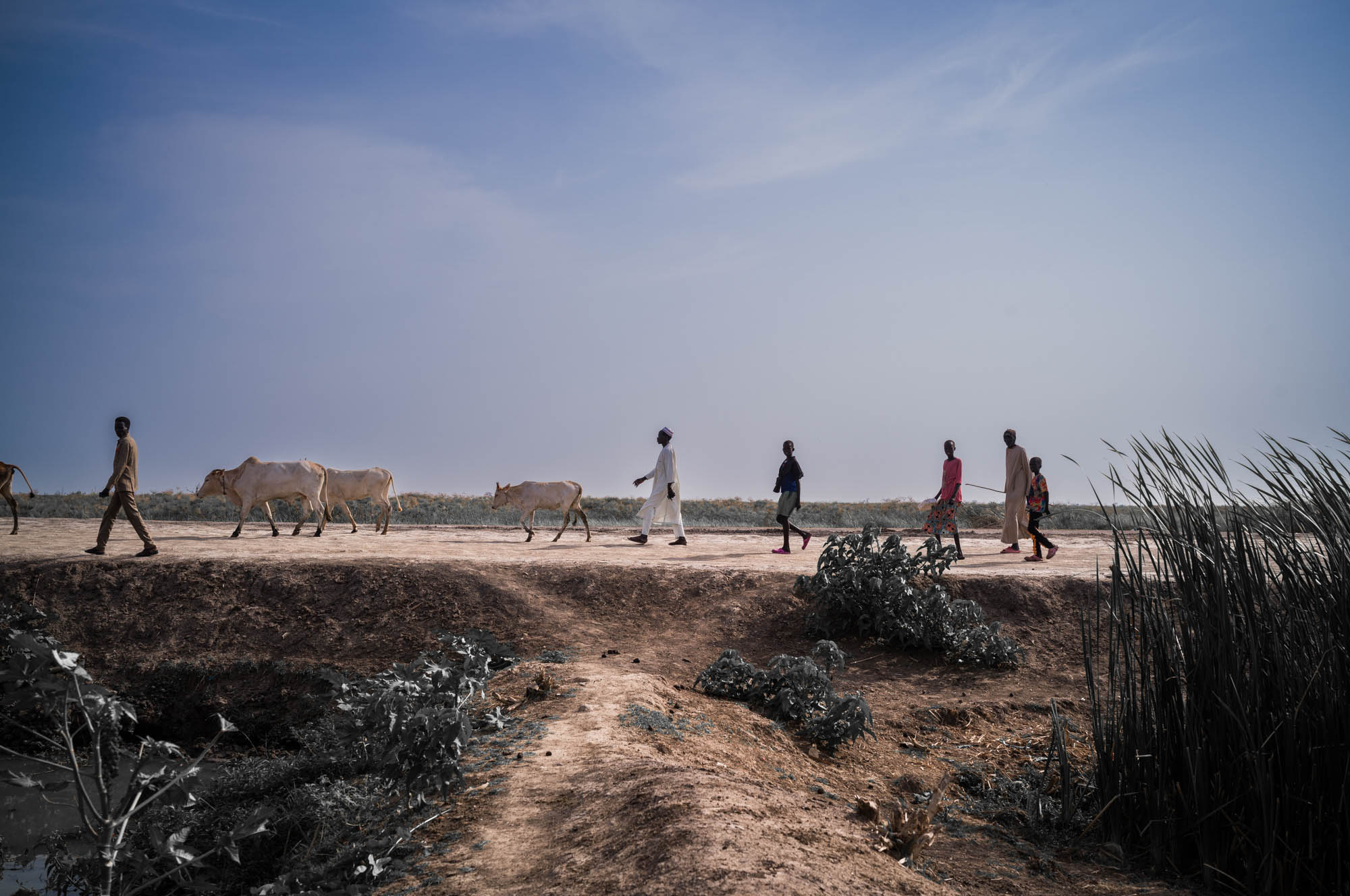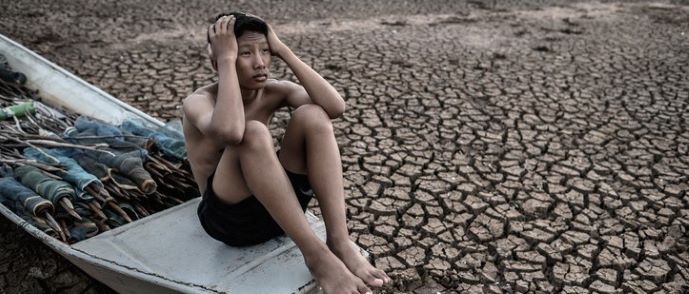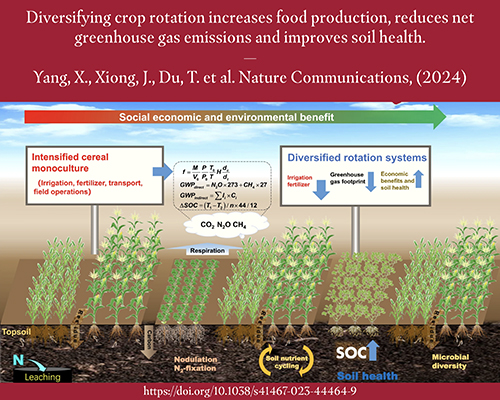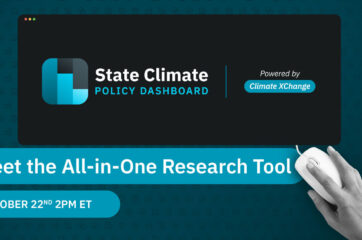Report on Climate-Induced Displacement and its Implications for the Sustainable Development Goals
Introduction: A Global Challenge to the 2030 Agenda
Climate change represents a global emergency that directly threatens the achievement of the Sustainable Development Goals (SDGs). Its impacts are not distributed equally, disproportionately affecting vulnerable populations in low- and middle-income countries, coastal regions, and island states. This displacement crisis undermines progress across numerous goals, particularly those related to poverty, equality, and peace.
The movement of people due to climate impacts, whether sudden or gradual, deepens existing inequalities and jeopardizes fundamental human rights. Addressing climate displacement is therefore integral to fulfilling the promise of the 2030 Agenda for Sustainable Development.
The Impact of Climate Displacement on Key Sustainable Development Goals
Undermining Foundational Goals: Poverty, Hunger, and Health (SDGs 1, 2, 3, 6)
Climate change directly obstructs efforts to achieve basic human well-being as outlined in the initial SDGs.
- SDG 1 (No Poverty) & SDG 8 (Decent Work and Economic Growth): The destruction of agricultural land, fisheries, and infrastructure pushes communities into poverty by eliminating livelihoods. In Pakistan, for instance, extreme heat makes it impossible for casual laborers to earn daily wages.
- SDG 2 (Zero Hunger): Prolonged droughts, as seen in Madagascar, lead to catastrophic famine. Rising sea levels and flooding cause soil salinization, destroying crops and threatening food security.
- SDG 3 (Good Health and Well-being): Extreme heatwaves cause heatstroke and exacerbate existing health conditions. Displaced populations often face unsanitary living conditions, increasing their exposure to disease.
- SDG 6 (Clean Water and Sanitation): Saltwater intrusion from rising sea levels contaminates freshwater sources, rendering water undrinkable and unusable for agriculture.
Exacerbating Systemic Inequalities (SDGs 5, 10)
Climate change acts as a “threat multiplier,” intensifying pre-existing vulnerabilities and discrimination, thereby hindering progress on equality-focused goals.
- SDG 5 (Gender Equality): Women and girls, who are more likely to experience poverty and lack land ownership or political representation, are more severely affected by the climate crisis.
- SDG 10 (Reduced Inequalities): The impacts of climate change fall heaviest on marginalized groups, including:
- Racialized communities and minorities
- Indigenous Peoples
- Persons with disabilities
- Older people and children
- People living in poverty
Threatening Habitats and Communities (SDG 11)
The viability of human settlements is under direct threat from climate change, challenging the core objective of SDG 11 (Sustainable Cities and Communities). Coastal communities and low-lying island nations like Tuvalu and Kiribati face existential threats from rising sea levels, which destroy homes, infrastructure, and ancestral lands.
Drivers of Displacement and the Failure of Climate Action (SDG 13)
Primary Anthropogenic Causes
The failure to achieve SDG 13 (Climate Action) is rooted in human activities that accelerate global warming. These drivers must be addressed to mitigate further displacement.
- Extraction and use of fossil fuels (coal, oil, gas)
- Unsustainable agricultural practices
- Widespread deforestation
- Changes in land use
Mechanisms of Climate-Induced Displacement
Displacement occurs through two primary mechanisms linked to the climate crisis:
- Sudden-Onset Disasters: Extreme weather events such as cyclones, wildfires, and floods are becoming more frequent and intense, causing repeated and prolonged displacement. The 2022 floods in Pakistan, which displaced eight million people, exemplify this trend.
- Slow-Onset Disasters: Gradual environmental degradation, including rising sea levels, desertification, and drought, renders entire regions unlivable over time, forcing permanent migration.
Institutional Failures and the Challenge to Justice (SDG 16)
Gaps in Legal Protection
The international legal framework has not kept pace with the climate crisis, undermining SDG 16 (Peace, Justice and Strong Institutions). There is no formal legal definition of a “climate refugee” under international law, leaving displaced persons in a state of legal uncertainty. While the principle of non-refoulement offers some protection, the lack of dedicated legal pathways creates significant gaps.
State Responsibility and Inaction
States have a legal responsibility to mitigate climate change, assist populations in adapting, and protect those who are displaced. However, current actions are insufficient.
- Most states lack dedicated protections against return to countries where climate change poses a real risk to human rights.
- Visa programs for those displaced by climate change are exceptionally rare.
- Existing migration policies are often restrictive and discriminatory, failing to protect the most vulnerable.
Recommendations for an Integrated Approach to Climate Justice and the SDGs
A Call for Urgent and Coordinated Action
To address the crisis of climate displacement and salvage progress on the 2030 Agenda, a multi-faceted approach is required.
- Accelerate Climate Mitigation (SDG 13): States must commit to a rapid and just phase-out of all fossil fuels to prevent further displacement.
- Establish Legal Frameworks (SDG 16): National, regional, and international legal frameworks must be established to protect persons displaced across borders due to climate change, including the creation of humanitarian visas and other safe pathways.
- Strengthen Global Partnerships (SDG 17): High-income countries, which bear historical responsibility for emissions, must provide robust financial and technical support for adaptation, loss, and damage in more vulnerable nations.
- Uphold Human Rights and Equality (SDG 10): All climate action and migration policies must be grounded in human rights and prioritize the needs of the most marginalized and affected communities.
1. Which SDGs are addressed or connected to the issues highlighted in the article?
SDG 13: Climate Action
- The entire article is centered on climate change, its causes (fossil fuel use, deforestation), and its devastating impacts such as rising sea levels, extreme weather events, and droughts. It explicitly calls for climate action, including a rapid phase-out of fossil fuels.
SDG 10: Reduced Inequalities
- The article repeatedly emphasizes that climate change is a “threat multiplier that deepens inequalities and discrimination.” It highlights that the impacts disproportionately affect marginalized groups, including people in low- and middle-income countries, racialized communities, women, Indigenous Peoples, and people with disabilities.
SDG 1: No Poverty
- The text connects climate change directly to poverty, stating that “those who live in poverty… are most affected.” It describes how climate impacts destroy livelihoods, such as fishing and farming, and how casual workers in Pakistan lose daily wages due to extreme heat, pushing them further into poverty.
SDG 16: Peace, Justice and Strong Institutions
- The article addresses the failure of legal systems and institutions to protect people displaced by climate change. It discusses the lack of legal status for “climate refugees,” the responsibility of states under international law, and calls for “clear legal frameworks” to protect the displaced.
SDG 2: Zero Hunger
- The connection to hunger is made through the example of southern Madagascar, where a prolonged drought has resulted in a “catastrophic famine.” The article also mentions the destruction of crops and the impact on agricultural productivity and food security due to rising sea levels and soil contamination.
SDG 6: Clean Water and Sanitation
- The article points out that rising sea levels lead to “saltwater contaminating fresh water sources,” making water undrinkable. It also notes that displaced people from the Pakistan floods faced “haphazard provisions of food and water.”
2. What specific targets under those SDGs can be identified based on the article’s content?
-
SDG 13: Climate Action
- Target 13.1: Strengthen resilience and adaptive capacity to climate-related hazards and natural disasters in all countries. The article details the vulnerability of coastal communities in Honduras and low-lying island nations like Tuvalu to flooding and rising sea levels, illustrating a critical need to build resilience.
- Target 13.2: Integrate climate change measures into national policies, strategies and planning. The article criticizes government inaction and calls on states to mitigate climate change by “rapidly phasing out fossil fuels” and establishing legal frameworks, which are core components of integrating climate measures into national policy.
-
SDG 10: Reduced Inequalities
- Target 10.7: Facilitate orderly, safe, regular and responsible migration and mobility of people, including through the implementation of planned and well-managed migration policies. The central theme of the article is the lack of legal protection and safe pathways for people displaced by climate change. It calls for “humanitarian visas” and criticizes “discriminatory and restrictive” migration policies.
-
SDG 1: No Poverty
- Target 1.5: By 2030, build the resilience of the poor and those in vulnerable situations and reduce their exposure and vulnerability to climate-related extreme events. The article explicitly states that people living in poverty are on the “frontlines of the crisis” and face repeated flooding that destroys homes and livelihoods, highlighting their extreme vulnerability to climate shocks.
-
SDG 16: Peace, Justice and Strong Institutions
- Target 16.3: Promote the rule of law at the national and international levels and ensure equal access to justice for all. The article discusses how existing international law does not recognize the term “climate refugee” and points to the failure of states to meet their legal obligations, thereby denying justice and protection to those displaced by climate impacts.
3. Are there any indicators mentioned or implied in the article that can be used to measure progress towards the identified targets?
Target 1.5 / 13.1: Build resilience and reduce vulnerability to disasters
- Indicator (Implied): Number of people displaced by disasters. The article provides a specific figure from the International Displacement Monitoring Centre, stating that “9.8 million people are displaced by disaster.” It also notes that in the 2022 Pakistan floods, “eight million [were] internally displaced.” These numbers serve as direct measures of vulnerability and the scale of climate-related displacement.
Target 10.7: Facilitate orderly, safe, regular and responsible migration
- Indicator (Implied): Number of countries with migration policies addressing climate displacement and the number of visas issued. The article implies this indicator by stating that such policies are “extremely rare” and provides a concrete example: “Australia offered a visa programme specifically for up to 280 people a year from Tuvalu.” This specific number can be used as a baseline to measure progress.
Target 2.1: End hunger and ensure access to food
- Indicator (Implied): Prevalence of severe food insecurity or famine. The article’s reference to a “catastrophic famine” in southern Madagascar due to drought implies that the number of people experiencing such conditions is a key indicator of the climate crisis’s impact on food security.
4. Table of Findings
| SDGs | Targets | Indicators |
|---|---|---|
| SDG 13: Climate Action | Target 13.1: Strengthen resilience and adaptive capacity to climate-related hazards and natural disasters. | Number of people displaced by disasters. The article cites that “9.8 million people are displaced by disaster” and “eight million internally displaced” in Pakistan’s 2022 floods. |
| SDG 10: Reduced Inequalities | Target 10.7: Facilitate orderly, safe, regular and responsible migration and mobility of people. | Number of dedicated visas for climate-displaced persons. The article notes that such visas are “extremely rare” and gives a specific figure: “Australia offered a visa programme specifically for up to 280 people a year from Tuvalu.” |
| SDG 1: No Poverty | Target 1.5: Build the resilience of the poor and reduce their vulnerability to climate-related extreme events. | Number of people in poverty affected by climate disasters. The article highlights that in Pakistan, “Thirty-three million people were affected” by floods, with a disproportionate impact on those in poverty. |
| SDG 16: Peace, Justice and Strong Institutions | Target 16.3: Promote the rule of law and ensure equal access to justice. | Existence of national and international legal frameworks for climate displacement. The article states that “Only some countries offer dedicated protections” and calls on all states to “urgently establish clear legal frameworks.” |
| SDG 2: Zero Hunger | Target 2.1: By 2030, end hunger and ensure access by all people… to safe, nutritious and sufficient food all year round. | Prevalence of famine in climate-affected regions. The article points to a “catastrophic famine” in southern Madagascar resulting from a prolonged drought. |
Source: amnesty.org







